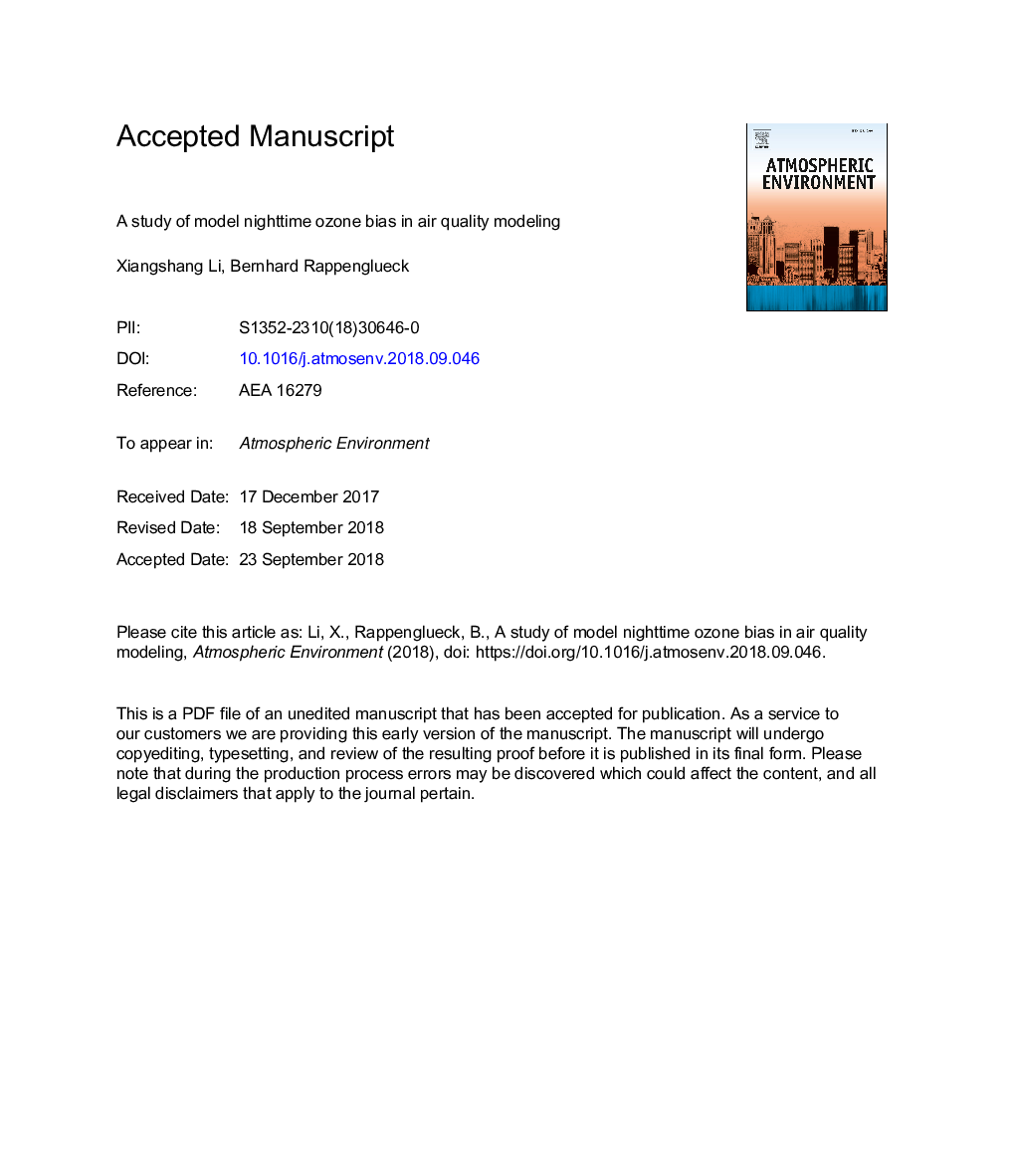| کد مقاله | کد نشریه | سال انتشار | مقاله انگلیسی | نسخه تمام متن |
|---|---|---|---|---|
| 11017761 | 1721146 | 2018 | 35 صفحه PDF | دانلود رایگان |
عنوان انگلیسی مقاله ISI
A study of model nighttime ozone bias in air quality modeling
ترجمه فارسی عنوان
مطالعه مدل تعویض اوزون شبانه در مدل سازی کیفیت هوا
دانلود مقاله + سفارش ترجمه
دانلود مقاله ISI انگلیسی
رایگان برای ایرانیان
کلمات کلیدی
مدل سازی کیفیت هوا، ازن، شب انتشار عمودی، بی نظمی، استفاده از زمین، پوشش زمین،
موضوعات مرتبط
مهندسی و علوم پایه
علوم زمین و سیارات
علم هواشناسی
چکیده انگلیسی
This study investigated the causes behind the nighttime ozone biases in southeast Texas, including background ozone, the land use/land cover (LULC) change and the minimum nighttime eddy diffusivity coefficient (Kzmin) setting. It also tried to shed light on a historical issue of large ozone biases by tracing the history of Community Multiscale Air Quality (CMAQ) model's treatment of Kzmin. The ozone biases associated with the low and active ozone days are distinctively different through examination of their diurnal cycles. Hence the model background ozone bias is likely responsible for ozone bias at the regional level. Significant differences in PBL height, vertical mixing, dry deposition and spatial patterns of ozone biases were found in two LULC cases. Spatial patterns of nighttime eddy diffusivity and dry deposition are consistent with the underlying LULC data. By using the default Kzmin setting which lowering the nighttime vertical mixing, the average ozone bias is reduced as compared to the alternative Kzmin setting. The reduction is 3.7â¯ppb or 31% when the latest National Land Cover Database (NLCD) 2011 is used. Still biases as high as 20â¯ppb exist at a number of sites. There are minimal changes in ozone biases in inner city and coastal sites while the changes in some rural/suburban sites are substantial. Also higher sensitivity was observed when preceding day ozone was high. The results showed that both downward mixing of ozone above and dilution of surface NO are important processes for nighttime ozone. By comparing the spatial bias pattern of 2006 and 2015, we are fairly certain the high nighttime eddy diffusivity in the old simulation played a significant role in the large nighttime biases. The impacts from the uncertainties in dry deposition can be medium while uncertainties caused by model horizontal advection are likely less significant. Factors other than background ozone mostly contribute to the local level biases.
ناشر
Database: Elsevier - ScienceDirect (ساینس دایرکت)
Journal: Atmospheric Environment - Volume 195, December 2018, Pages 210-228
Journal: Atmospheric Environment - Volume 195, December 2018, Pages 210-228
نویسندگان
Xiangshang Li, Bernhard Rappenglueck,
